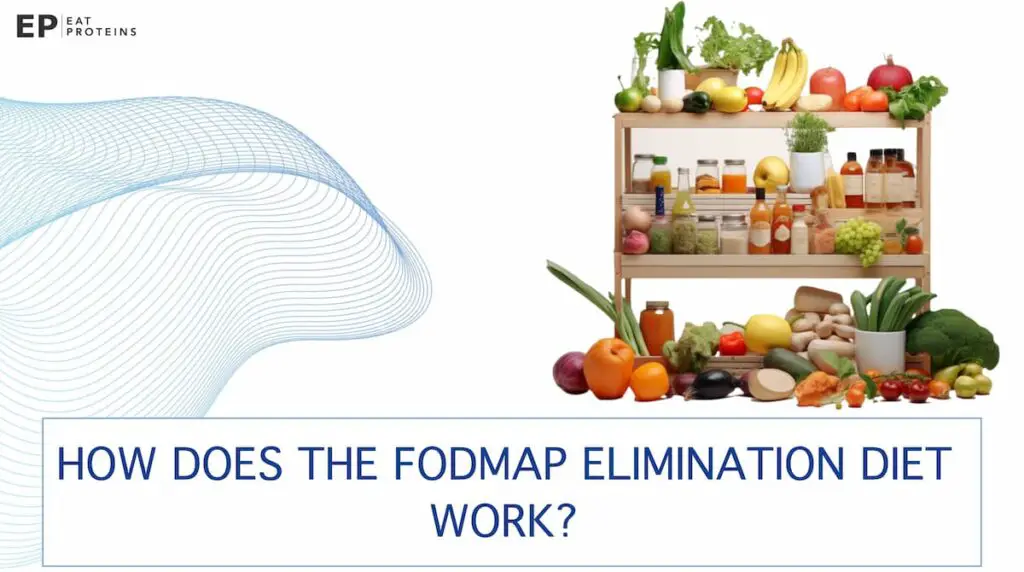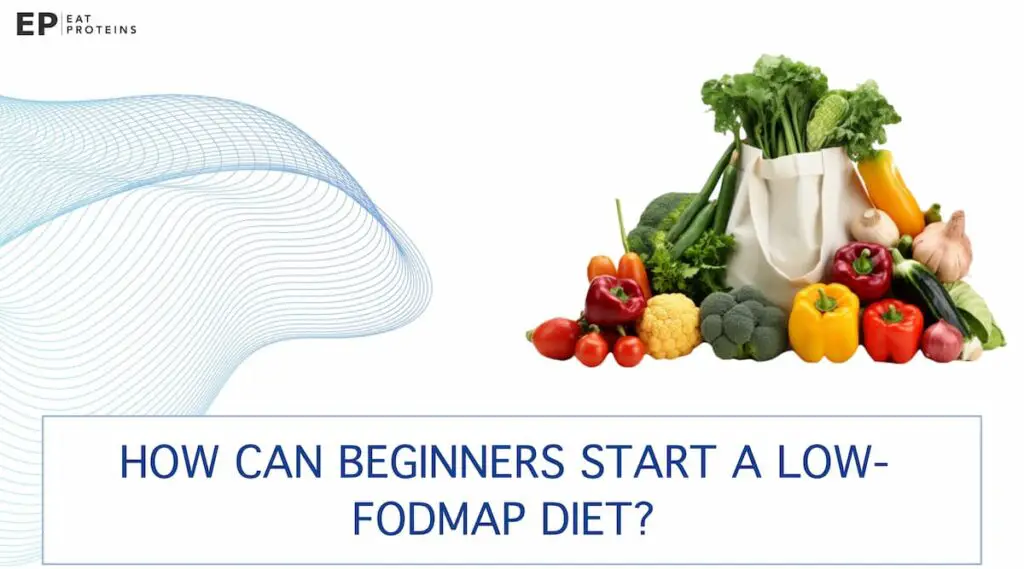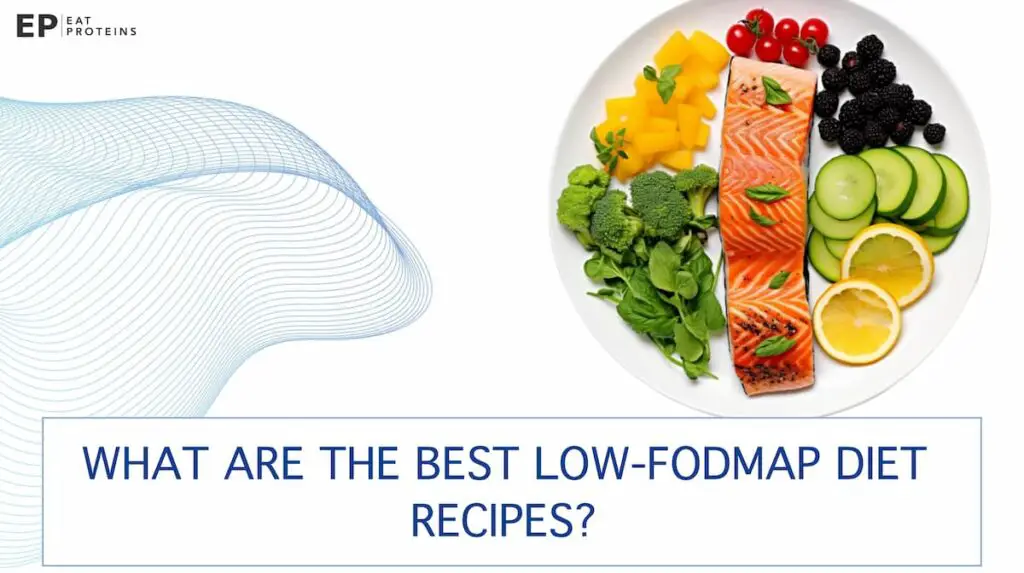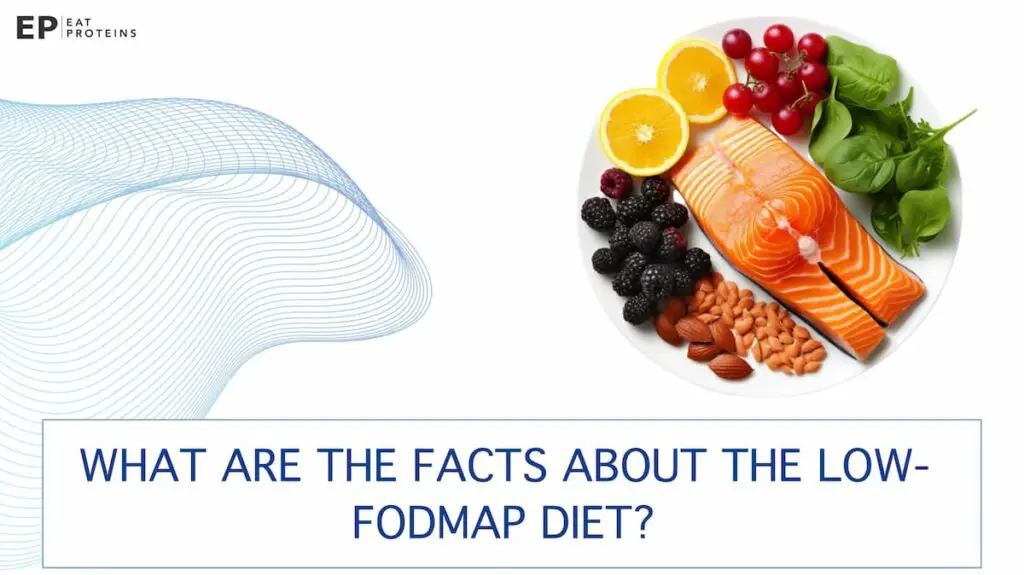The Low-FODMAP diet, also known as the FODMAP elimination diet is a nutritional approach that focuses on reducing the intake of fermentable oligo-, di-, and monosaccharides, and polyols, which are short-chain carbohydrates known to worsen gastrointestinal symptoms like bloating, cramping, and diarrhea. Developed for managing irritable bowel syndrome (IBS), the diet goes through three phases with the goal of identifying well-tolerated foods containing some FODMAPs.
According to a study published in the Nutrients Journal in January 2020 by the University of Pisa, long-term randomized controlled studies on the diet are still lacking, but it is increasingly recommended for IBS treatment. A book titled “Low-FODMAP Diet,” published in 2023 by Kunzah Syed from Memorial Sloan Kettering Cancer Center, states that up to 75% of patients may show symptom relief within six weeks of adopting the diet. Despite its potential benefits, concerns about the diet include its nutritional adequacy, cost, and the complexity of teaching and maintaining it.
What is the low-FODMAP Diet?
The Low-FODMAP diet is designed to manage symptoms of irritable bowel syndrome (IBS) by restricting the intake of poorly absorbed, fermentable, short-chain carbohydrates known as FODMAPs. Developed by researchers at Monash University in Australia, including Professor Peter Gibson, it has gained international acceptance over the past decade as an effective dietary strategy for IBS, as stated in the journal Journal of Gastroenterology and Hepatology in March 2017.
A meta-analysis conducted by Anne-Sophie van Lanen and published in the European Journal of Nutrition in February 2021 found that the low-FODMAP diet reduces IBS severity by a moderate-to-large extent and improves quality of life. However, the low-FODMAP diet should initially be followed strictly for only 4 to 6 weeks due to concerns about its long-term impact on the intestinal microbiome, according to the same 2017 study. It is highly recommended to implement this diet under the guidance of a qualified dietitian for the most effective results.
How did the low-FODMAP diet originate?
The FODMAP diet plan originated from research conducted by Dr. Peter Gibson and his team at Monash University in Australia. They discovered that certain carbohydrates, known as FODMAPs, were poorly absorbed in the small intestine and could worsen gastrointestinal symptoms in individuals with irritable bowel syndrome (IBS).
How does the FODMAP elimination diet work?
The FODMAP diet works by restricting fermentable carbohydrates that can worsen gastrointestinal symptoms, but it may not be suitable for everyone, especially pregnant women and those with malnutrition. This diet is implemented in three phases, with the goal of gradually reintroducing some FODMAP-containing foods.

FODMAP stands for Fermentable Oligosaccharides, Disaccharides, Monosaccharides, and Polyols. Examples of foods that contain these carbohydrates are onions, garlic, and wheat for oligosaccharides; lactose-containing foods like milk for disaccharides; fructose-rich foods like apples for monosaccharides; and sugar alcohols like xylitol for polyols.
What are the health benefits of the low-FODMAP Diet?
The health benefits of the FODMAP diet plan include improvement in gastrointestinal symptoms, such as cramping, bloating, and diarrhea, in patients with irritable bowel syndrome (IBS), celiac disease, inflammatory bowel disease, diverticulitis, and fibromyalgia, along with improved quality of life, anxiety, and work performance in adults with IBS with diarrhea.
- Reduction in Bloating: The FODMAP diet helps significantly reduce bloating, a common symptom in conditions like irritable bowel syndrome (IBS) and celiac disease.
- Alleviation of Cramping: Following the FODMAP diet has been linked with a decrease in abdominal cramping, providing relief to individuals with various digestive disorders.
- Decrease in Diarrhea: The FODMAP diet for IBS is effective in managing and reducing the frequency of diarrhea, especially in patients with IBS or inflammatory bowel disease.
- Improved Quality of Life: Adopting the FODMAP diet not only reduces gastrointestinal symptoms but also improves the overall quality of life for individuals with digestive issues.
- Reduced Anxiety: Many people experience reduced anxiety levels as a result of fewer gastrointestinal symptoms, leading to improved mental well-being.
- Enhanced Work Performance: The reduction in gastrointestinal symptoms and associated discomfort can lead to increased productivity and better work performance.
- Nutritional Balance: Although the diet restricts certain types of carbohydrates, it encourages the consumption of a variety of other nutrient-rich foods, contributing to a balanced diet.
What are the health risks of the low-FODMAP Diet?
As with any diet, the health risks of the low-FODMAP diet include potential deleterious effects on the microbiome and nutrient intake if followed for longer than four to six weeks. Restrictive phases of the diet may decrease the concentration and proportion of beneficial gut bacteria, such as Bifidobacteria. The diet should be followed under the guidance of healthcare professionals to ensure adequate nutrient intake and to minimize potential harm from extreme restrictions.
How can I track my symptoms while on the FODMAP diet?
To track symptoms while on the FODMAP diet, you can keep a food and symptom diary where you record what you eat and any gastrointestinal symptoms you experience. This will help you identify any trigger foods and monitor your progress. Additionally, it is important to maintain regular communication with your healthcare team to discuss your symptoms and make any necessary adjustments to your diet.
How can beginners start a low-FODMAP diet?
To successfully implement the FODMAP diet, start by consulting a healthcare professional for personalized advice tailored to your specific health condition.

- Consult a Healthcare Professional: Speak to a healthcare provider to determine if the FODMAP diet is suitable for you and what specific elimination diet you need.
- Identify Your Problem: Determine whether you need a FODMAP diet for conditions like IBS, microscopic colitis, SIBO, or IBD.
- Learn About Side Effects: Educate yourself on the potential side effects of the FODMAP diet to make an informed decision.
- Get a Food List: Acquire a comprehensive FODMAP diet food list to know what you can and cannot eat.
- Find Recipes: Look for FODMAP-friendly recipes to add variety to your meals.
- Develop a Meal Plan: Create a FODMAP diet meal plan tailored to your needs or choose a pre-made meal planner.
- Access Resources: Find a low FODMAP diet chart in PDF format or a printable version for easy reference.
- Use Technology: Utilize a FODMAP diet app or invest in a low FODMAP diet book for additional guidance and tracking.
How do I know if the FODMAP diet is right for me?
To determine if the FODMAP diet is right for you, it is recommended to consult with a gastroenterologist and a nutritionist for guidance. They can assess your medical history, symptoms, and dietary needs to determine if the FODMAP diet may be beneficial for managing gastrointestinal symptoms such as bloating, cramping, and diarrhea.
What foods can you eat on a low-FODMAP Diet?
The following list shows the foods you can eat on a low-FODMAP diet.

- Meats and Proteins: Opt for lean meats like chicken turkey, and fish.
- Vegetables: Stick to low-FODMAP veggies like carrots, cucumber, and zucchini.
- Fruits: Enjoy fruits such as strawberries, grapes, and oranges.
- Grains: Choose grains like rice, quinoa, and oats.
- Dairy Alternatives: Use lactose-free milk and cheeses.
- Condiments: Stick to homemade or low-FODMAP sauces and dressings.
- Snacks: Opt for low-FODMAP snacks like rice cakes and certain types of nuts like almonds.
What is the list of foods to avoid on a FODMAP diet?
- High-FODMAP Vegetables: Avoid garlic, onions, and mushrooms.
- High-FODMAP Fruits: Steer clear of apples, pears, and watermelon.
- Dairy Products: Exclude regular milk, yogurts, and soft cheeses.
- Grains: Avoid wheat-based products like bread and pasta.
- Legumes: Skip beans, lentils, and other high-FODMAP legumes.
- Sweeteners: Avoid high-FODMAP sweeteners like honey and agave nectar.
- Processed Foods: Stay away from processed meats and snacks that may contain high-FODMAP ingredients.
What are the best low-FODMAP diet recipes?
The best low-FODMAP diet recipes include a variety of options for breakfast, lunch, dinner, and snacks. They are carefully designed to be IBS-friendly and avoid ingredients high in FODMAPs. From comforting classics to quick and easy meals, these recipes cater to various dietary preferences and provide delicious options for anyone following a low-FODMAP diet.

Low-FODMAP Smoothie
Start your morning by blending the lactose-free yogurt, strawberries, and unripe bananas together until smooth. Add in the chia seeds and blend for another 10 seconds. Pour into a glass and enjoy a gut-friendly breakfast.
FODMAP Chicken and Rice Salad
Combine the cooked rice, sliced grilled chicken, baby spinach, and diced cucumber in a bowl. Drizzle olive oil over the mix, and season with salt and pepper. Toss everything together and your lunch is ready to go.
FODMAP Baked Salmon with Zucchini
Preheat your oven to 400°F (200°C). Place the salmon fillet and zucchini slices on a baking sheet. Drizzle garlic-infused olive oil over the salmon and zucchini. Add lemon slices on top of the salmon. Season with salt and pepper. Bake for 20 minutes or until the salmon is cooked through.
FODMAP Quinoa and Vegetable Stir-Fry
Heat olive oil in a pan over medium heat. Add the diced carrots and zucchini, and sauté until softened. Stir in the cooked quinoa and season with salt and pepper. Cook for another 5 minutes, stirring frequently. Your vegetarian low-FODMAP meal is ready to serve.
What is the sample low-FODMAP diet meal plan?
A sample low-FODMAP meal plan is a 7-day guide that provides meal suggestions designed to minimize digestive symptoms like bloating, gas, and discomfort, focusing on foods that are low in fermentable carbs.
Day 1
- Breakfast: Low-FODMAP smoothie with lactose-free yogurt, strawberries, and chia seeds
- Lunch: Chicken and rice salad with baby spinach and cucumber
- Dinner: Baked salmon with zucchini
Day 2
- Breakfast: FODMAP-friendly cereal with lactose-free milk
- Lunch: Grilled shrimp with rice and steamed spinach
- Dinner: Beef stir-fry with carrots and bell peppers
Day 3
- Breakfast: Scrambled eggs with spinach
- Lunch: Tuna salad with lettuce and cucumber
- Dinner: Grilled chicken with potatoes and green beans
Day 4
- Breakfast: Overnight oats made with rolled oats and lactose-free milk
- Lunch: Turkey sandwich on gluten-free bread with lettuce and tomato
- Dinner: Pork chops with mashed potatoes and sautéed spinach
Day 5
- Breakfast: Smoothie with banana, spinach, and lactose-free yogurt
- Lunch: Veggie stir-fry with tofu and rice
- Dinner: Baked cod with asparagus
Day 6
- Breakfast: FODMAP-friendly cereal with lactose-free milk
- Lunch: Chicken Caesar salad (use lactose-free dressing)
- Dinner: Beef stew made with carrots, potatoes, and low-FODMAP broth
Day 7
- Breakfast: Smoothie with blueberries, lactose-free yogurt, and a handful of spinach
- Lunch: Quinoa and vegetable stir-fry
- Dinner: Grilled steak with baked potato and sautéed zucchini
What are the facts about the low-FODMAP diet?

- The low-FODMAP diet typically starts with an elimination phase where high-FODMAP foods are removed from the diet for a period, usually 2-6 weeks, to observe any changes in symptoms.
- The low-FODMAP diet plan is used to manage various conditions including IBS, SIBO, endometriosis, constipation, weight loss, and ulcerative colitis.
- Several mainstream restaurants like Applebee’s, Burger King, Chick-fil-A, and Chipotle Mexican Grill offer low-FODMAP options or dishes that can be modified to fit the diet.
- Certain alcoholic beverages, like vodka and gin, are considered low-FODMAP, but moderation is key as alcohol can irritate the gut.
- While some types of coffee are low in FODMAPs, it’s crucial to consider how it’s prepared and what additives, like milk or syrups, are used.
What are some common mistakes to avoid while on a low FODMAP diet?
The following list shows the common mistakes to avoid on a low-FODMAP diet.
- Incorrect Reintroduction Phase: One common mistake is rushing the reintroduction phase or not following it at all, which makes it difficult to identify which specific FODMAPs trigger symptoms.
- Overconsumption of Low-FODMAP Foods: Another error is overeating foods that are low in FODMAPs, not realizing that in larger quantities they can still contribute to symptoms.
- Neglecting Nutritional Balance: People often focus solely on FODMAP content and neglect other nutritional aspects, which can lead to deficiencies in essential nutrients like fiber and calcium.
What is the difference between a FODMAP diet and a gluten-free diet?
The FODMAP diet is designed to eliminate specific types of fermentable carbohydrates that are hard to digest and can cause gastrointestinal symptoms, particularly in people with irritable bowel syndrome (IBS). In contrast, a gluten-free diet eliminates all foods containing gluten, a protein found in wheat, barley, and rye, and is essential for managing celiac disease.
Are there any famous people who follow the FODMAP diet?
Yes, Kirsten Dunst and Catherine Tyldesley are two famous celebrities who have publicly shared their experiences of following the FODMAP diet to manage their IBS symptoms.
Is a low-FODMAP diet considered a healthy diet?
No, the low-FODMAP diet is not necessarily considered a healthy diet in the long term, as it may have potential negative effects on the microbiome and nutrient intake if followed for an extended period of time.
